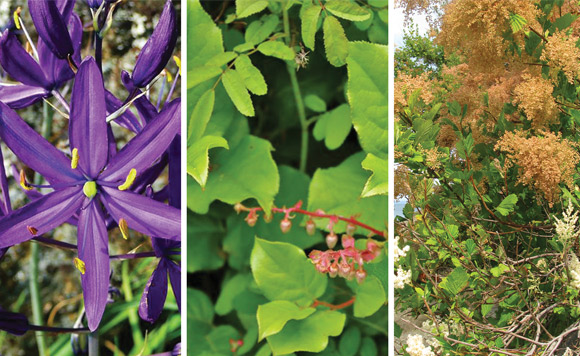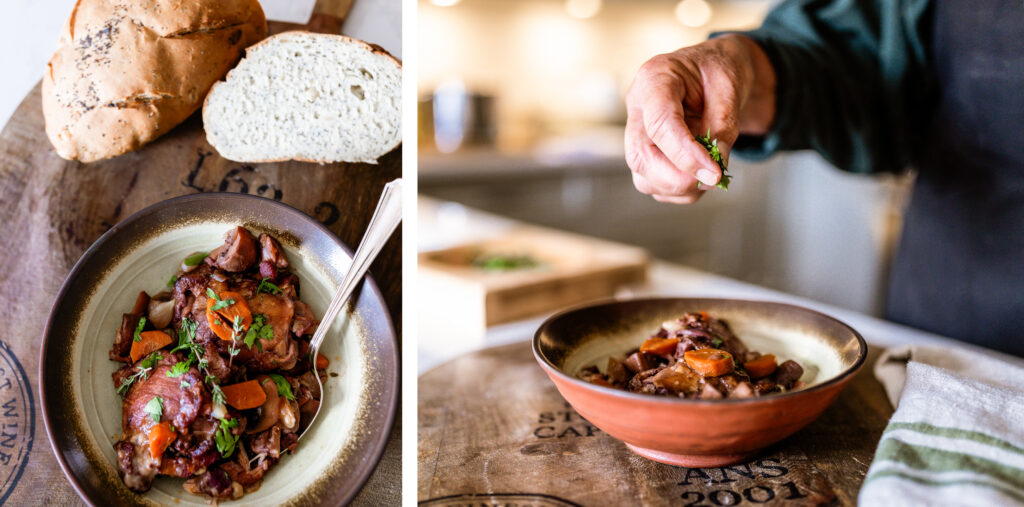– by Tina Kelly –
Seaweed, blackberries and mushrooms: flora of the forest and sea, enjoyed by many for their edibility and health benefits. These, however, represent only a few of more than 3,000 plants and 600 macroalgal species in British Columbia. Ethnobotany studies the relationship between plants and people and, not surprising here on the coast, plants played an important role in the health and wellness of First Nations. A wide variety of flowers, shrubs and trees were consumed, aided in medicinal treatments or provided raw materials to make tools for hunting and fishing.
Common camas, a member of the lily family, is found in a relatively small area of Vancouver Island, predominantly in Garry Oak meadows. The bulb of the plant was tremendously important for WSANEC people, providing a carbohydrate to accompany their diet heavy in fish and meat. In order to avoid gathering the bulbs of death camas – a toxic relative – bulbs were collected immediately after the plants flowered; death camas has white flowers, whereas common camas has pale- to deep-blue blooms.
Salal is a common evergreen shrub with delicate pink flowers and dark purple berries found throughout Vancouver Island and most of coastal B.C. A common plant with plentiful berries, it’s no surprise they were enjoyed by all coastal First Nations. Think berries three ways: fresh, dried into cakes to enjoy in winter and, more recently, jams and jellies. For some First Nations, they were used as a sweetener and the Haida used them to thicken salmon eggs.
Oceanspray: this four-metre-tall shrub’s name to some degree misrepresents its habitat. Though found along coastal bluffs, it also flourishes at mid-elevation open woods, ravine edges and logged areas. This plant’s fruiting clusters were boiled and used to treat diarrhea, however a more significant use for the oceanspray shrub was for making hunting and fishing tools. Also known as “ironwood,” the incredibly firm wood of oceanspray becomes even more solid when heated, making it perfect for constructing digging sticks, harpoons, and bows and arrows. The WSANEC used this wood to make salmon-barbecuing sticks and halibut hooks.
To learn more about the traditional uses of local plants, pick up a copy of Food Plants of Coastal First Peoples by Dr. Nancy Turner or Saanich Ethnobotany, Culturally Important Plants of the WSANEC People co-authored by Dr. Nancy Turner and Dr. Richard Hebda.
Photo credit left to right: Common camas, Beeran Photography; Salal, Beeran Photography; Oceanspray, Tina Kelly.




